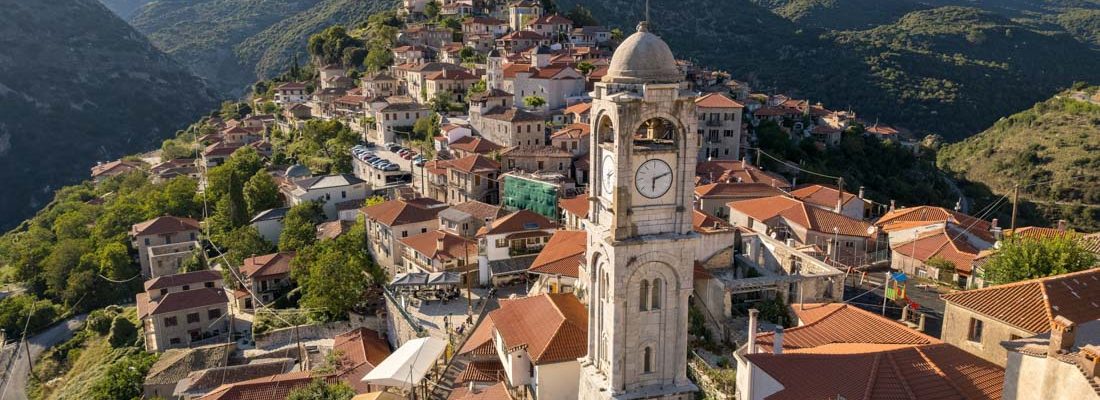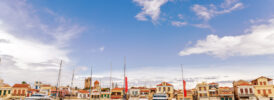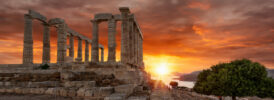In any season of the year, Arcadia is a wonderful destination. Arcadia really has it all – a varied terrain rich in mountains, gorges, a wetland, even a cave. Cultural treasures span the wonders of Ancient Greece, through historic monasteries and the proud and beautiful villages of the Greek War of Independence. Meanwhile, Arcadia’s gastronomy and wines will delight the discerning. Here are some of the many highlights of this spectacular region of Greece.
The Stunning Mountain Villages of Arcadia
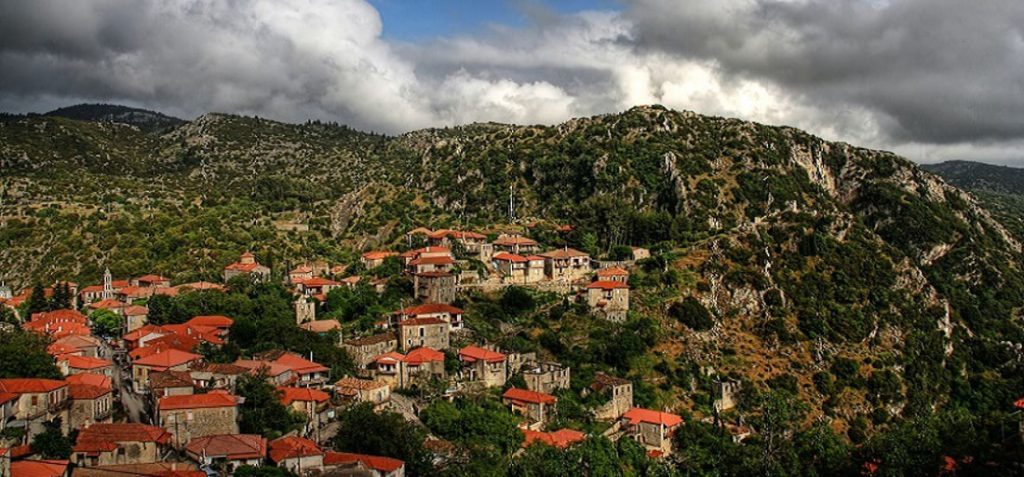 The traditional mountain village of Dimitsana (945m), and its “archontika” – aristocratic mansions, has a noble history placing it at the center of modern Greek history. Dimitsana also played a role in more recent Greek culture, providing the gunpowder for the Greek War of Independence. This is also the birthplace of “Paleon Patron Germanos” – the Metropolitan Bishop of Patras, who first raised the Revolutionary flag. Mountain-top Stemnitsa (1083m) is a close neighbor, just 8 km away. The village deserves its reputation as one of the most beautiful of the Peloponnese, built like an amphitheater into the slope of the mountain and commanding sweeping views. Like in Dimitsana, mansions of stone line the cobbled streets, and beautiful Byzantine churches beckon. Between the two villages is the beautiful Philosophou Monastery, at the outskirts of the village, which was a center of great learning.
The traditional mountain village of Dimitsana (945m), and its “archontika” – aristocratic mansions, has a noble history placing it at the center of modern Greek history. Dimitsana also played a role in more recent Greek culture, providing the gunpowder for the Greek War of Independence. This is also the birthplace of “Paleon Patron Germanos” – the Metropolitan Bishop of Patras, who first raised the Revolutionary flag. Mountain-top Stemnitsa (1083m) is a close neighbor, just 8 km away. The village deserves its reputation as one of the most beautiful of the Peloponnese, built like an amphitheater into the slope of the mountain and commanding sweeping views. Like in Dimitsana, mansions of stone line the cobbled streets, and beautiful Byzantine churches beckon. Between the two villages is the beautiful Philosophou Monastery, at the outskirts of the village, which was a center of great learning.
Lake Stymphalia
Just to the north, at the edge of the Corinthia district, is the magnificent mountain lake Stymphalia, shimmering at an elevation of 600m between two mountains. This protected wetland, part of the Natura 2000 network, is home to over 130 species of protected and endangered birds. A unique fish is endemic to the lake, the Phoxinellusstymfalicius (you can spot the name of the lake in the long name of the fish). The fish is of great interest as it manages to survive even in a drought. Those curious to know more about the waterland paradise can visit the environmental museum by the lake.
Kapsia Cave
The beauty of the region is also hidden beneath the surface, in this cave famous for its spectacular rock formations – stalactites and stalagmites which are lit dramatically and enhanced by the reflective pools. The cave is safely explored via a footpath, and it is a relatively “new” attraction in the Peloponnese. While it has existed for millennia, it is still being explored, and has been open to visitors only since 2010.
A Hikers’ Paradise
This lush and mountainous region is a great favorite with hikers, and there are trails of various lengths, for every level of experience and stamina. The Lousios Gorge, following the river Lousios, is among the most famous gorges of Greece.
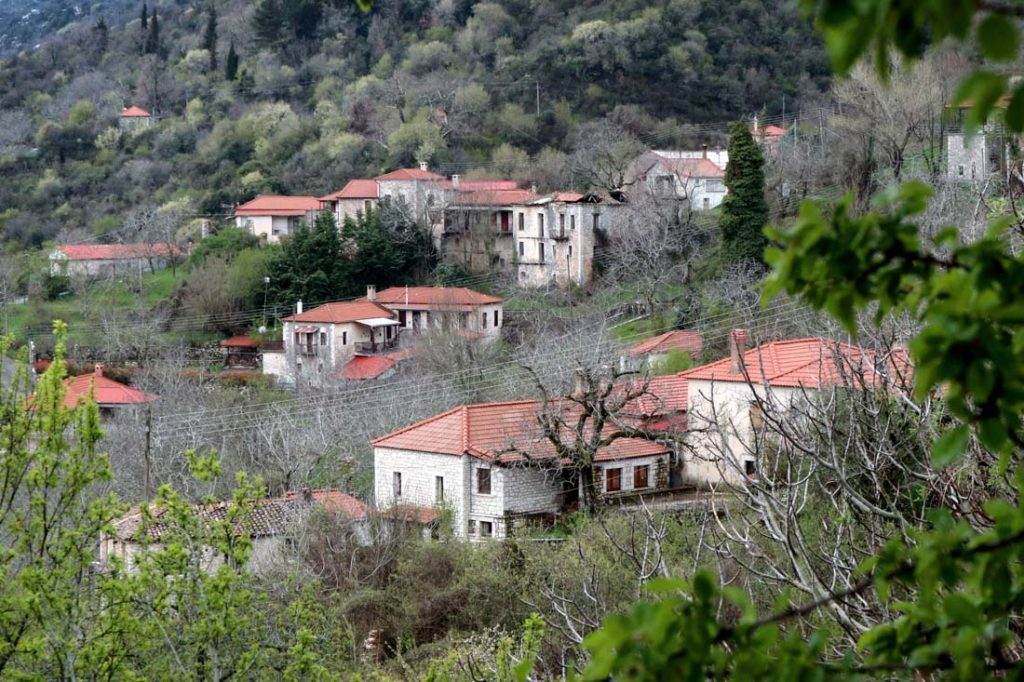
The historic monasteries along this route have earned it the nick-name “Mount Athos of the Peloponnese.” Some of the Monasteries are built into the sides of the cliffs. The hike passes by the Old Philosophou Monastery, which dates from the Byzantine era (963 AD). The “New” Philosophou Monastery, which replaced the old one, dates from the 17th century. Other monasteries along this historic route include the 16th century Monastery of Timios Prodromos (St. John the Baptist), the Monastery of Aimyales, and, at the beginning of the hike, the Church of Agios Andreas.
 The river Lousios has a lovely myth attached to its name. “Lousiso” means “to bathe” and mythology has it that the infant Zeus was bathed here.
The river Lousios has a lovely myth attached to its name. “Lousiso” means “to bathe” and mythology has it that the infant Zeus was bathed here.
The Lousios Gorge is a dramatic hike that can be divided into sections, as one wishes. The section of the trail that connects the historic mountain villages Stemnitsa and Dimitsana, for example, is a little over 12 km, and takes about 5 (somewhat challenging) hours. There are shorter and easier hikes along the route, arranged by experienced guides, which provide a satisfying experience.
Ancient Gortyna
The Lousios Gorge trail begins not at a monastery but at a site much older – Ancient Gortyna. Even by Greek standards, this is an ancient archaeological site, spanning all the major epochs in Ancient Greek history. The earliest findings date to the Mycenaean era (1600-1100 BC) through the Geometric era (8th-5th centuries BC, then the Archaic, Classical, and Hellenistic periods, and on into the Byzantine era. One of the most important Arcadian cities in antiquity, the ancient site has an asklepieion (a place of healing) and thermal baths related to the asklepieion. You can feel the healing energy of the gorge here.
A Rustic Gourmet Holiday
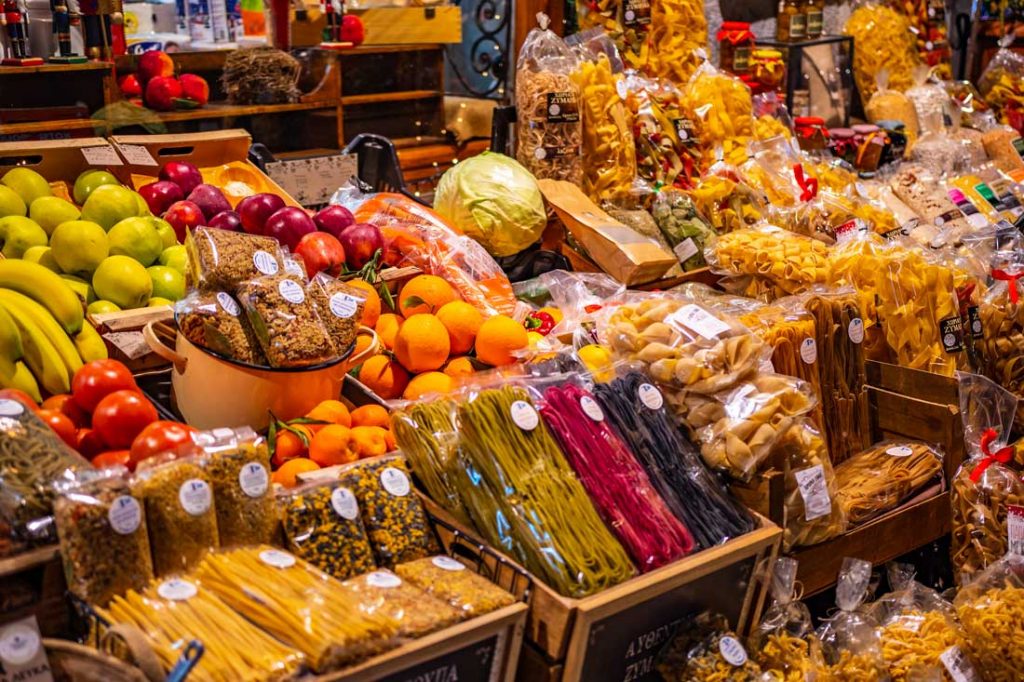 All of the exploration and hiking is bound to sharpen the appetite. Gastronomy in Arcadia is wonderful, hearty and refined, based on fresh, seasonal products. Lamb and goat, along with rooster, are the meats of choice, with rabbit and wild boar in season. They are also known for their pies of hand-rolled phyllo dough, local cheeses, and the regional cured pork specialties. Oenophiles will be equally pleased, with the wines of the PDO Mantinea region, of fragrant Moschofilero and the fruity floral Asproudi.
All of the exploration and hiking is bound to sharpen the appetite. Gastronomy in Arcadia is wonderful, hearty and refined, based on fresh, seasonal products. Lamb and goat, along with rooster, are the meats of choice, with rabbit and wild boar in season. They are also known for their pies of hand-rolled phyllo dough, local cheeses, and the regional cured pork specialties. Oenophiles will be equally pleased, with the wines of the PDO Mantinea region, of fragrant Moschofilero and the fruity floral Asproudi.
A Holiday in Arcadia
 Are you a hiker, a lover of archaeology, or someone interested in historic monasteries and mountain villages? Have you experienced the wonders of Arcadia?
Are you a hiker, a lover of archaeology, or someone interested in historic monasteries and mountain villages? Have you experienced the wonders of Arcadia?

